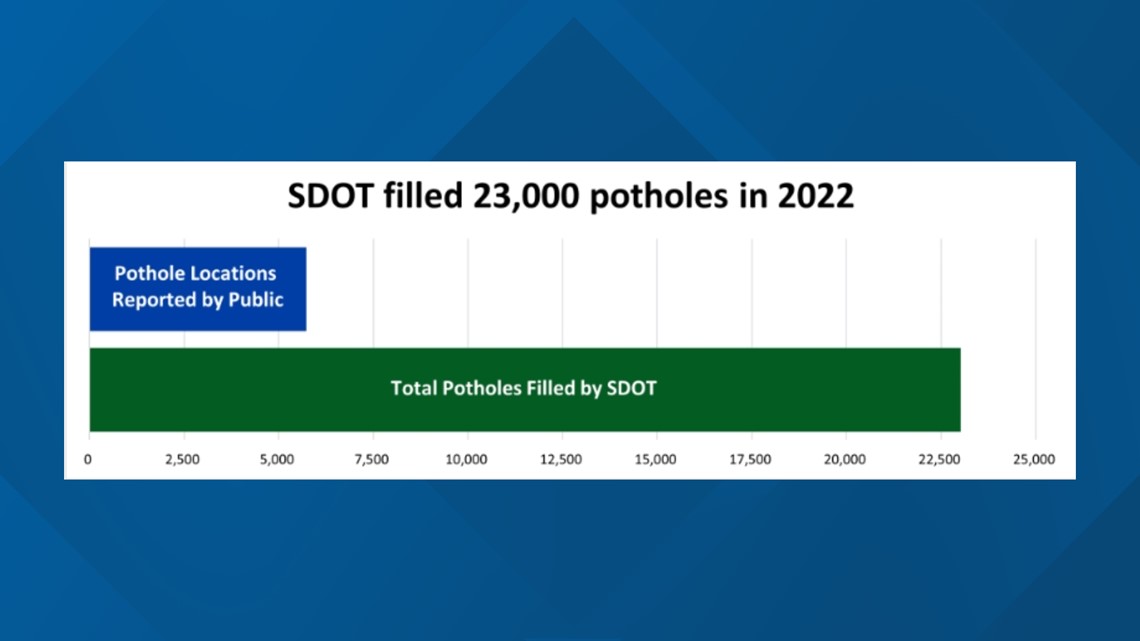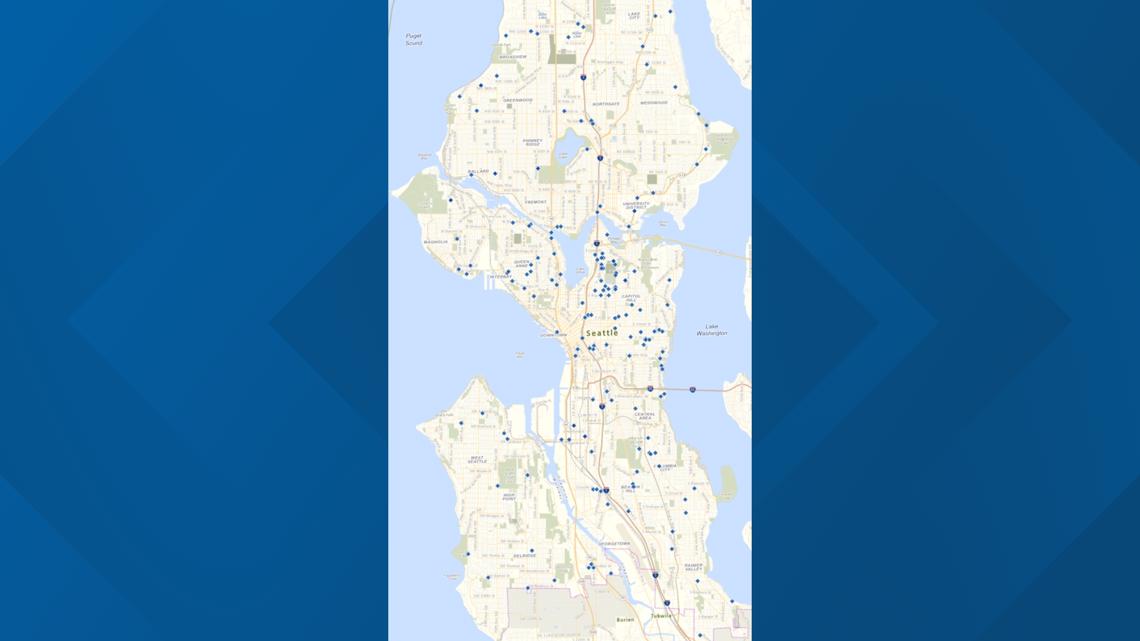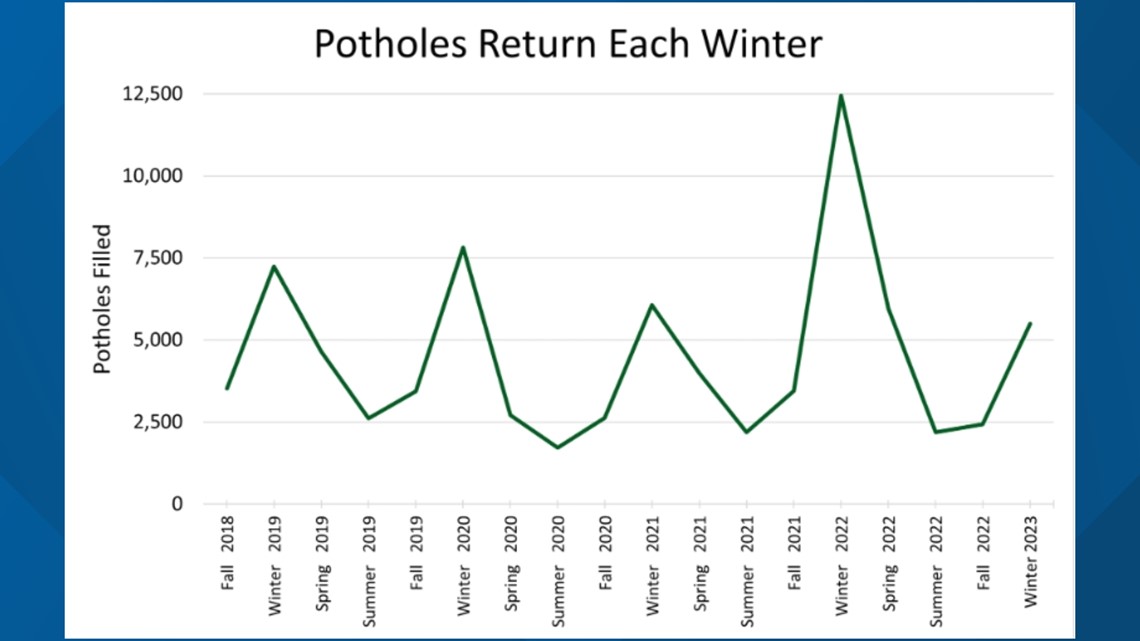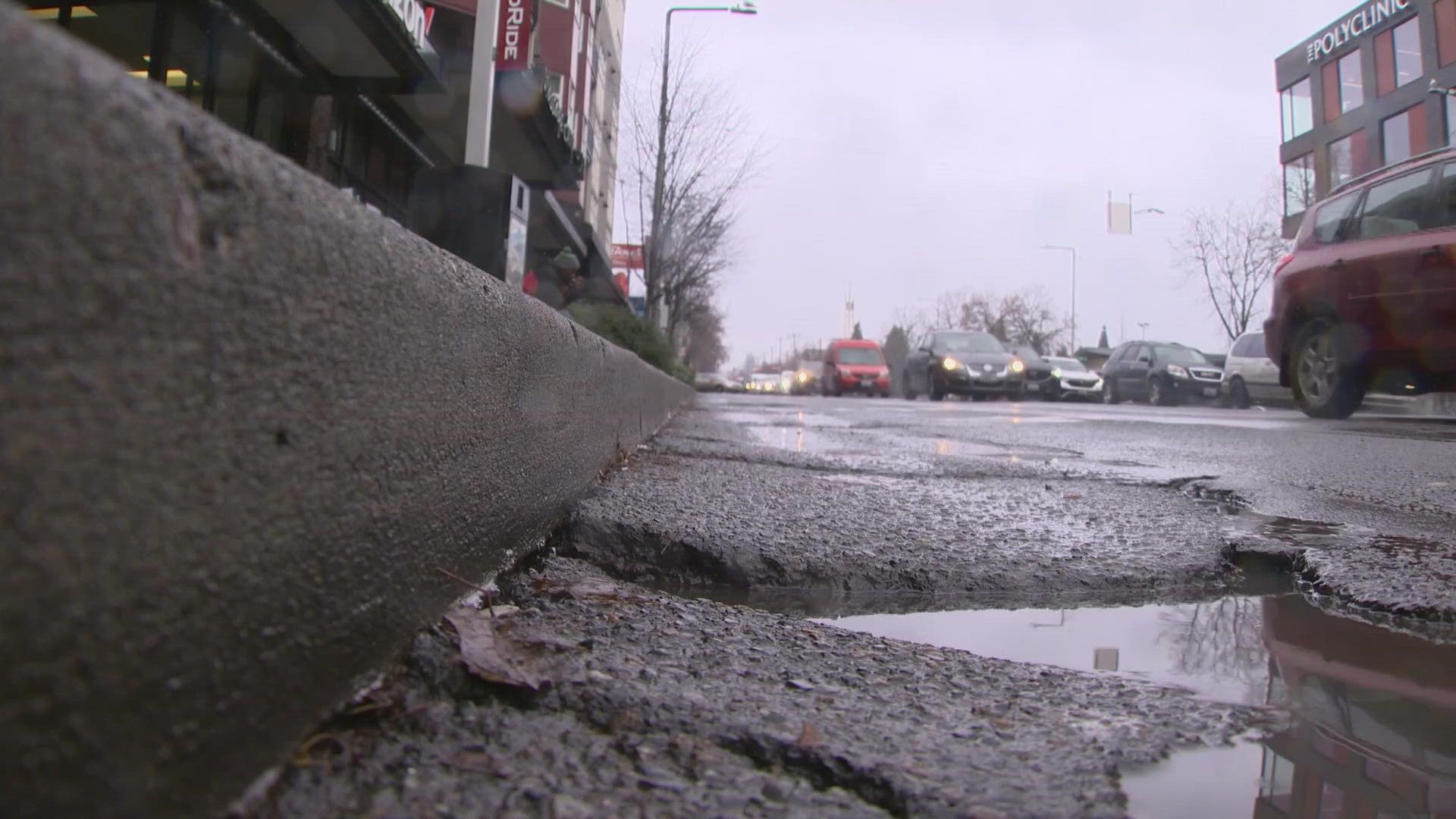SEATTLE — Seattle Department of Transportation (SDOT) crews said Thursday they filled 23,000 potholes throughout the city in 2022, the most filled in the last five years.
The SDOT said in a release Thursday that maintenance crews filled 50% more potholes in 2022 than they did in 2021.
The agency's goal is to fill most potholes within three days of being reported, but it can take longer when there's a surge of requests.
"It's not your imagination," SDOT said in its release. "There were more potholes than usual last year."


The pothole trend has not slowed in the new year either.
The agency said workers have filled about 5,500 potholes in 2023, filling as many as 500 potholes in a single day. At this current pace, crews would fix well over 33,000 potholes in 2023.
Chart: Recently filled potholes in Seattle as of Feb. 9


Chart: Pending potholes in Seattle as of Feb. 9


The SDOT said it has increased the size of its pothole response crews this winter because of storm-related damages.
Crews have patrolled snow plow routes to proactively look for new potholes. These routes have been identified as essential to Seattle's transportation system and see an uptick in heavy vehicles during winter storms, increasing the likelihood for potholes to appear.
Why do potholes keep happening?
The SDOT said potholes re-appear year round, especially during the winter when severe storms are likelier.
Rain, snow and ice damage streets, as water sneaks through cracks in the pavement. When temperatures drop low enough, the water freezes and expands into ice, creating cracks and eroding streets from the inside out, according to SDOT.
As new potholes form, cars, trucks and buses worsen the street's condition and eventually cause large chunks of concrete to break off.
Winter repairs don't last "forever," SDOT said, because asphalt does not bind to pavement quite as well during cold weather. That means pothole repairs today may need to be repaired again until the weather warms.
SDOT called potholes a "continual challenge year-round."


But maintenance workers can prevent frequent potholes with larger paving projects to replace the damaged pavement. Filling potholes is equivalent to putting a band-aid on a larger problem, SDOT said.
The Levy to Move Seattle allowed crews to pave nearly 30 miles of Seattle streets in 2022. A total of about 200 miles have been paved since 2016, according to SDOT. Potholes are less likely to occur on streets that have been recently paved, after all.
For more preventative measures, SDOT said Seattle's Slurry Seal program adds a thin protective sealant to a street to keep water out and extend the life of the pavement. In 2022, workers re-sealed more than 100 blocks of city streets in Greenwood, Fremont, Rainier Beach, Rainier View and Dunlap.
"We want to thank our crew members for working so hard to make repairs during the winter months," SDOT said on Thursday. "We also want to extend our appreciation to you for your patience as our teams work through a large volume of potholes."
How to report a pothole in Seattle
The public is urged to send reports of new potholes as they form throughout the city. There are several ways to report a pothole in Seattle:
- Find It, Fix It App
- Submitting an online report
- Emailing 684-ROAD@seattle.gov
- Call (206) 684-ROAD [7623]
Check the map below to see the repair status of a pothole near you.

